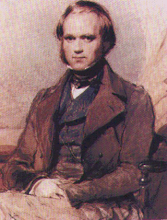
It seems obvious to us now, if we stop to think about it, but in Darwin’s day people did not appreciate the role earthworms played in aerating and fertilizing soil, and the effect that all that burrowing had on displacing objects-- a headstone, the foundation of a house.
Darwin performed an experiment in which he buried a layer of pieces of coal at a known depth, then returned 20 years later to check the distribution of the coal pieces to find that they had indeed been mixed more deeply into the soil. Darwin used coal because it is distinctive from the native soil and chalky bedrock of his garden.
Of the earthworm Darwin wrote, "...it may be doubted if there are any other animals which have played such an important part in the history of the world as these lowly organized creatures."
In 2009, researchers returned to the garden at Down House and re-excavated the coal layer, and found it, 100 years after Darwin’s original experiment:
http://www.npr.org/templates/story/story.php?storyId=100627614
Photo: illustration from "Formation of Vegetable Mould..." showing the buried coal, from http://darwin-online.org.uk/converted/published/1882_Worms_F1364/1882_Worms_F1364_fig150.jpg













.jpg)








